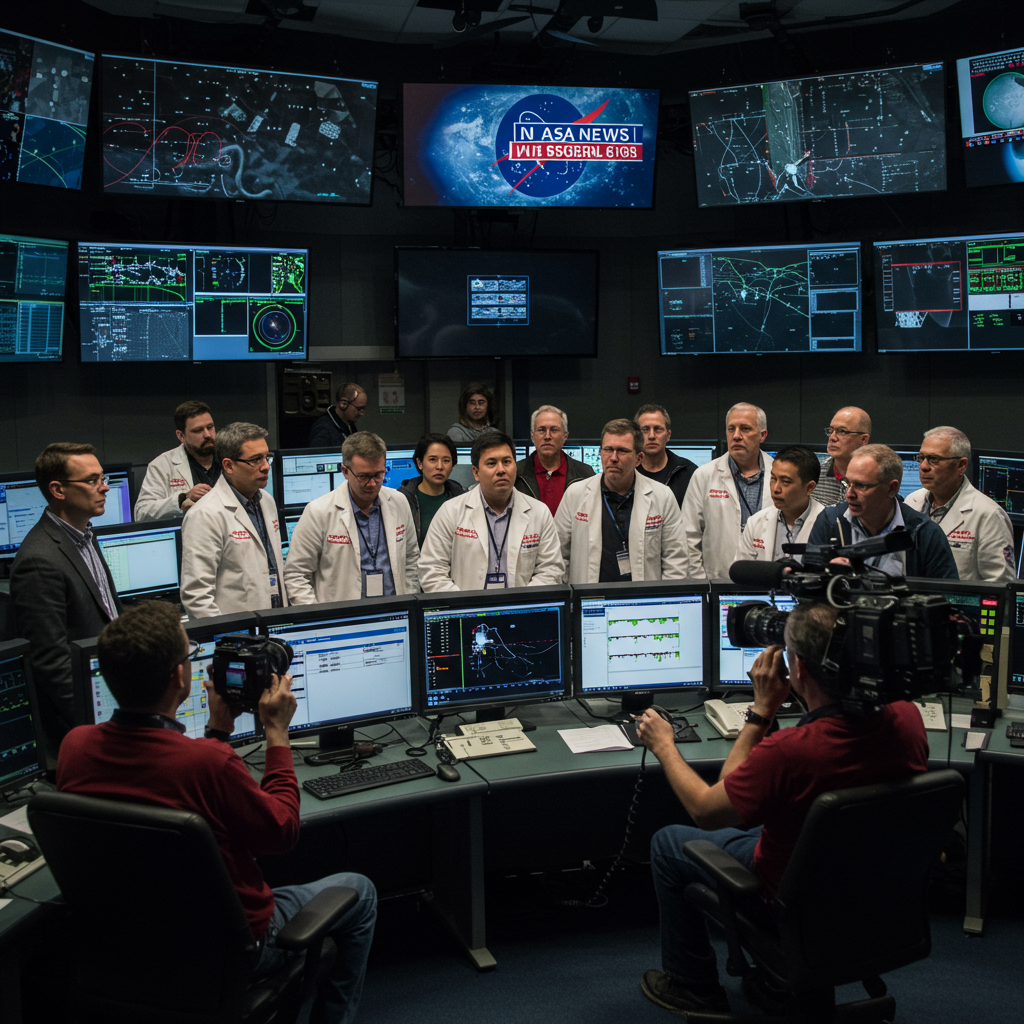Major uncertainty hangs over the future of American space science. The White House is reportedly moving aggressively to implement deep cuts to NASA’s science programs. This push appears timed to happen before Congress can pass its own budget. The proposed actions could ground valuable missions currently exploring our solar system and beyond.
Scientists and mission leaders are raising urgent concerns. They fear the potential loss of irreplaceable expertise and ongoing discoveries. This situation highlights a significant conflict over the direction and funding of NASA. It could have lasting consequences for the United States’ leadership in space exploration.
White House Demands “Closeout” Plans for Science Missions
In a surprising move, NASA leaders, acting on behalf of the White House Office of Management and Budget (OMB), directed dozens of science mission teams to prepare detailed “closeout” plans. These plans outline how to shut down missions. The deadlines are extremely tight, with some required by July 9. This tight turnaround left teams scrambling, particularly given the proximity of the July 4 holiday weekend.
While internal memos frame this as a “planning exercise only,” many scientists involved see it differently. They believe this directive is a strategic effort by the Trump administration. The goal appears to be canceling numerous NASA science missions quickly. This action aims to preempt congressional action.
The October 1st Deadline
The closeout plans are to be prepared assuming shutdown orders arrive by October 1, 2025. This date marks the beginning of the upcoming fiscal year, FY2026. For missions currently operating spacecraft in space, the plans anticipate completion of shutdown within three months. This means operational missions could go dark by the end of 2025.
Multiple sources suggest these actions are tied to anticipating a delay in Congress passing a budget. If Congress fails to enact a final budget by October 1, federal agencies typically operate under a “continuing resolution” (CR). A CR usually maintains funding at previous year levels. This allows ongoing missions to continue. However, the current administration seems intent on avoiding this outcome for targeted science programs.
Proposed Cuts Threaten Nearly Half of NASA’s Science
The scale of the proposed reductions is substantial. The White House’s budget request for FY2026 seeks a 24% overall reduction for NASA. The budget would drop from $24.8 billion to $18.8 billion. NASA’s Science Mission Directorate faces the most severe impact. It could see nearly 50% of its funding cut.
NASA currently oversees 124 science missions. These are in various stages, from development to operation. The proposed budget could effectively cancel 41 of these missions. Another 17 missions might see their funding completely eliminated in the near future. This puts almost half of NASA’s science portfolio at risk. Many other missions face budget cuts of 20-40%.
High-Profile Missions on the Chopping Block
These severe cuts would impact many well-known projects. Potential casualties include NASA’s only mission currently at Jupiter (widely understood to be Juno). A critical mission exploring an asteroid set for a close Earth flyby in 2029 is also listed. Two promising missions planned for Venus face cancellation. The complex effort to return samples collected from Mars is also at risk.
Jim Green, who previously led NASA’s Planetary Science Program, expressed dismay. He noted that these cuts would “be turning off some fabulous missions that are doing extremely well.” The proposed reductions threaten not just future exploration but also active, successful missions already providing valuable data.
Exploiting Budget Uncertainties to Force Cuts
Normally, Congress reviews the White House budget proposal. Appropriators then set funding levels. However, recent years have seen frequent delays in Congress passing a budget by the deadline. This often leads to CRs. While CRs typically protect ongoing programs by maintaining funding, this administration appears to be employing a different strategy.
Led by OMB Director Russ Vought, the administration seems poised to treat the President’s Budget Request (PBR) as the operating plan for NASA. This could happen even without a congressional budget in place. Sources indicate this approach has been communicated to NASA center directors. The aim is to implement the administration’s priorities directly.
Bypassing Congressional Oversight
This strategy involves circumventing traditional interactions with Congress. Usually, NASA submits operating plans to Congress. This allows appropriators to provide feedback and signal their intent to continue funding specific activities. This process has saved missions in the past, like the Chandra X-ray Observatory.
However, reports suggest the OMB has blocked NASA from submitting these operating plans to Congress this year. This move prevents Congress from formally advising NASA on which programs it intends to support. It removes a key mechanism for congressional input and oversight before a budget is finalized. Rep. George Whitesides criticized this as a “bad faith move.” He argued it was an attempt “to go around Congress” to enact a “radical agenda.”
Broader Context and Competing Priorities
The proposed cuts to science missions occur within a larger context of government-wide efforts to reduce non-defense spending. Reports from earlier in 2025 indicated discussions across agencies about Reductions in Force (RIFs). While judges ordered some agencies to reinstate fired probationary employees, the focus on cutting positions signals a broader directive for fiscal restraint. NASA itself reportedly received an extension on submitting its RIF plans and met with representatives from a “Department of Government Efficiency.”
These actions contrast sharply with bipartisan efforts in Congress. In March 2025, a bipartisan Senate bill was introduced to reauthorize NASA. This bill recommended increasing NASA’s funding to $25.5 billion for FY2025 (though a CR kept funding at FY24 levels). The bill also explicitly supported key programs like the Space Launch System (SLS) and Mars Sample Return, albeit with calls for cost controls. This demonstrates a different vision for NASA within Congress compared to the administration’s proposed cuts.
Some policy arguments favor shifting NASA’s focus. These arguments suggest relying more on commercial partners for routine space access and even large missions. Proponents argue this approach can lower costs and spur innovation. However, the proposed cuts target fundamental science exploration missions. These missions often require unique, long-term government investment due to their complexity and lack of immediate commercial return.
Irreversible Damage: The Loss of Expertise
The most significant consequence of shutting down these missions is the potential loss of specialized teams. Operating complex spacecraft requires unique expertise built over many years. Scientists, engineers, and technicians dedicated to specific missions possess knowledge found nowhere else.
Once missions are turned off, these teams will disperse. Many will seek other employment. Jim Green warned that “Without the expertise, you don’t have the ability to run the mission safely.” Even if Congress were to restore funding months later, it would be nearly impossible to reassemble the specific, highly skilled teams needed. The technical knowledge and institutional memory required to safely operate these unique assets would be gone. This makes the potential shutdown effectively irreversible. It would not just pause science; it would permanently end decades of investment and discovery for dozens of missions.
Frequently Asked Questions
Why is the White House trying to cut NASA science funding now?
The White House proposed deep cuts to NASA’s science programs in its budget request for Fiscal Year 2026, which starts October 1, 2025. Reports suggest the administration anticipates Congress may not pass a final budget by this deadline, leading to a continuing resolution (CR). By demanding closeout plans now and treating the President’s Budget Request as the de facto operating plan, they aim to implement these cuts before a CR or congressional budget could potentially maintain funding levels.
Which specific NASA science missions are at risk from these proposed cuts?
The proposed budget would effectively cancel 41 out of 124 science missions and zero out funding for 17 more, impacting nearly half of NASA’s science portfolio. Specific high-profile missions reportedly facing potential termination include NASA’s only mission at Jupiter (likely Juno), a mission exploring a near-Earth asteroid, two planned missions to Venus, and the effort to return samples from Mars. The Nancy Grace Roman Space Telescope is also mentioned as being at risk.
What is the long-term impact of shutting down these NASA science missions?
The primary long-term impact is the irreversible loss of expertise. Shutting down complex spacecraft and ground operations leads to the dispersal of specialized teams of scientists and engineers. Even if funding were restored later by Congress, it would be extremely difficult, if not impossible, to reassemble these unique teams with the necessary knowledge and experience to safely operate the missions again. This loss of human capital means valuable ongoing discoveries would end permanently, and decades of investment in these projects would be lost.
The situation creates a critical juncture for NASA’s future. The outcome depends heavily on the interplay between the White House’s fiscal priorities, OMB’s bureaucratic strategies, and Congress’s power of appropriation. The potential loss of dozens of active and planned NASA science missions represents a significant threat to American leadership in space exploration and scientific discovery. Scientists and advocates are working to highlight the value of these missions and the irreversible consequences of the proposed cuts.




